Potřebujeme váš souhlas k využití jednotlivých dat, aby se vám mimo jiné mohly ukazovat informace týkající se vašich zájmů. Souhlas udělíte kliknutím na tlačítko „OK“.
ASTM E1760-09
Standard Guide for Unrestricted Disposition of Bulk Materials Containing Residual Amounts of Radioactivity
Automaticky přeložený název:
Standardní Guide pro neomezený Dispozice sypkých materiálů obsahujících zbytkové množství radioaktivity
NORMA vydána dne 1.6.2009
Informace o normě:
Označení normy: ASTM E1760-09
Poznámka: NEPLATNÁ
Datum vydání normy: 1.6.2009
Kód zboží: NS-42936
Počet stran: 6
Přibližná hmotnost: 18 g (0.04 liber)
Země: Americká technická norma
Kategorie: Technické normy ASTM
Kategorie - podobné normy:
Anotace textu normy ASTM E1760-09 :
Keywords:
decontamination and decommissioning, radiologically contaminated materials, release of materials, Contamination--nuclear, Radiation exposure--nuclear materials/applications, Radioactive waste materials, Residual radioactivity, Trace elements--nuclear materials, Unrestricted disposition, ICS Number Code 13.030.40 (Installations and equipment for waste disposal and treatment)
Doplňující informace
| Significance and Use | ||||||||||
|
Materials encountered during D&D may contain residual radioactivity varying in amounts from that in irradiated fuel to barely detectable quantities in or on building materials. It is clear that highly radioactive materials have to be disposed as radioactive waste pursuant to 10 CFR 60 and 10 CFR 61. Conversely, it is not reasonable to expend a disproportionate amount of resources to isolate materials that contain minute quantities of radioactive materials that will not cause even statistically measurable health effects. This guide provides a rationale and methodology for distinguishing between materials that contain sufficient radioactivity to warrant isolation of some type (storage awaiting decay, near-surface disposal, disposal with intruder protection, or placement in a deep repository) from materials with insignificant radioactive content. Materials with insignificant radioactive content can be recycled in the economy or disposed of in conventional (landfill) facilities without adverse health effects. Materials that meet the criteria identified in this guide are not simply excluded from regulation because they do not fall precisely in the regulatory scope. They are sufficiently free of radioactive material so that no further efforts at control are justified for radiation protection purposes. Therefore, the release of materials for unrestricted use in accordance with this guide meets the criteria for being an “as low as reasonably achievable” (ALARA) activity. For the purpose of this guide, the return of materials containing residual radioactivity to society without regulatory restrictions is referred to as “unrestricted release based on the absence of the credible potential for adverse health effects.” This guide asserts that materials recycled this way will have no statistically measurable health effects regardless of use. It does not guarantee that the materials are suitable for use in every possible application, for example, trace amounts of radionuclides in materials may not be acceptable for certain photographic and electronic applications. This guide also asserts that the owner of the materials is responsible for ensuring that society's criteria for “no measurable health effects” is met before release, and that the responsibility for providing materials with the purity required for a special application rests not with the owner, but with the developer of that application. |
||||||||||
| 1. Scope | ||||||||||
|
1.1 This guide covers the techniques for obtaining approval for release of materials encountered in decontamination and decommissioning (D&D) from restricted use. This would be addressed in the decommissioning plan (E 1281). It applies to materials that do not meet any of the requirements for regulatory control because of radioactivity content. Fig. 1 shows the logic diagram for determining the materials that could be considered for release. Materials that negotiate this logic tree are referred to as “candidate for release based on dose.” 1.2 The objective of this guide is to provide a methodology for distinguishing between material that must be carefully isolated to prevent human contact from that that can be recycled or otherwise disposed of. It applies to material in which the radioactivity is dispersed more or less uniformly throughout the volume of the material (termed residual in bulk form) as opposed to surface contaminated objects. 1.3 Surface contaminated objects are materials externally contaminated with radioactive material. Provisions already exist for their release for recycle if it can be shown that they meet applicable federal and state regulations for surface contamination. Regulatory Guide 1.86 and DOE Order 5400.5 specify the upper limits for radioactive surface contamination on material to be released for unrestricted use. 1.4 The release of material containing residual radioactive material (except for 226Ra) in bulk form (for example, soil or slightly activated metal) is based on the demonstration that the dose to a member of the public will be lower than a specified value (proposed by the petitioner or defined by regulation) for its intended use and lower than a second specified value via the most restrictive plausible scenario. The first proposed value should be lower than the second since the dose to any member of the public (via the intended use scenario) will almost certainly be realized, whereas the dose from the alternate scenario will only accrue if an unintended (and presumably less probable) circumstance arises. Federal regulation already exists for the release of 226Ra contaminated soils. 1.5 Warning—Breathing of asbestos dust is hazardous. Asbestos and asbestos products present demonstrated health risks for users and for those with whom they come into contact. In addition to other precautions, when working with asbestos products, minimize the dust that results. For information on the safe use of chrysoltile asbestos, refer to “Safe Use of Chrysotile Asbestos: A Manual on Preventive and Control Measures.” 1.6 This standard does not purport to address all of the safety concerns, if any, associated with its use. It is the responsibility of the user of this standard to establish appropriate safety and health practices and determine the applicability of regulatory limitations prior to use. For a specific hazard see 1.5.
|
||||||||||
| 2. Referenced Documents | ||||||||||
|
Podobné normy:
Historická
15.2.2012
Historická
1.7.2011
Historická
1.11.2012
Historická
1.5.2014
Historická
1.12.2010
Historická
1.12.2011
Odebírejte informace o nově vydaných normách ZDARMA:
Chcete pravidelně odebírat informace o nově vycházejících normách z celého světa a to zcela zdarma?
Přihlašte se k odběru. Vše je velice jednoduché a absolutně ZDARMA.
Na výběr máte vydavatele z celého světa.


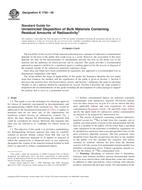
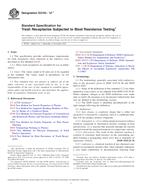 ASTM E2740-12e1
ASTM E2740-12e1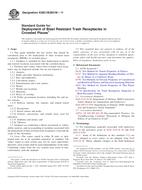 ASTM E2831/E2831M-11..
ASTM E2831/E2831M-11..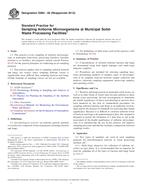 ASTM E884-82(2012)..
ASTM E884-82(2012)..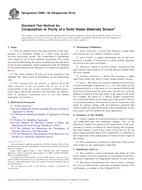 ASTM E889-82(2014)..
ASTM E889-82(2014)..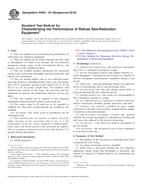 ASTM E959-83(2010)..
ASTM E959-83(2010)..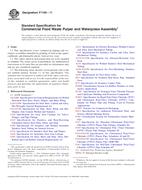 ASTM F1150-11
ASTM F1150-11
 Cookies
Cookies
